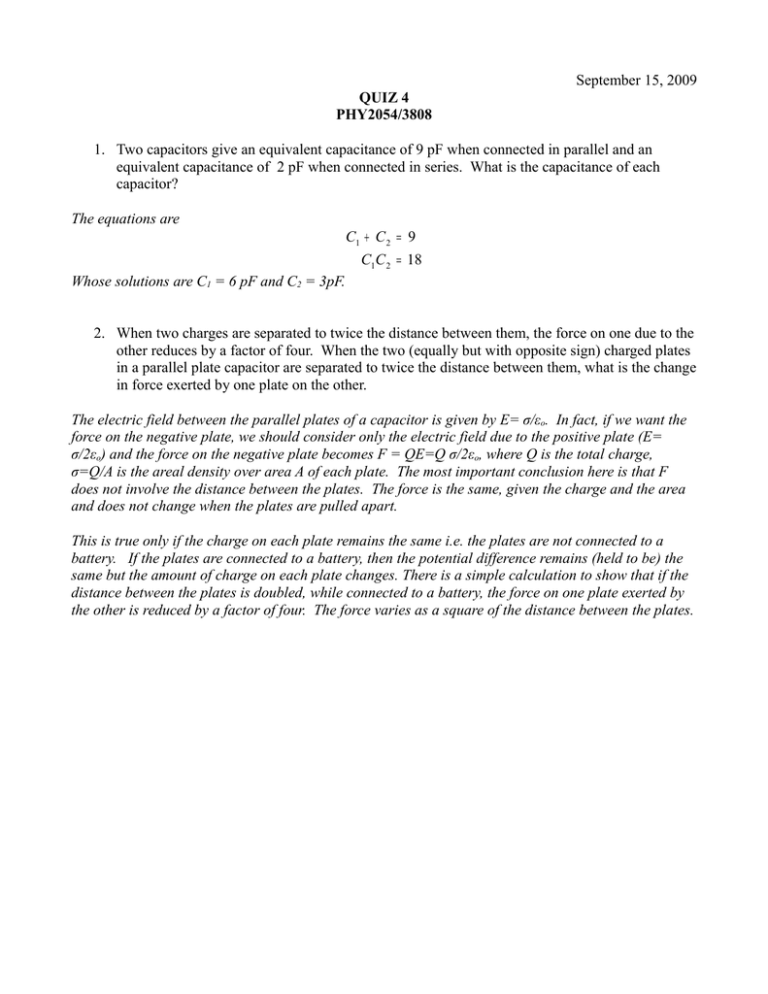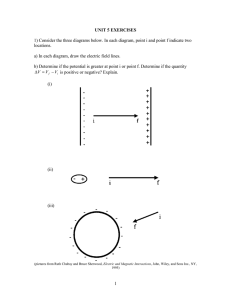September 15, 2009 QUIZ 4 PHY2054/3808 1. Two capacitors give
advertisement

September 15, 2009 QUIZ 4 PHY2054/3808 1. Two capacitors give an equivalent capacitance of 9 pF when connected in parallel and an equivalent capacitance of 2 pF when connected in series. What is the capacitance of each capacitor? The equations are C1 + C 2 = 9 C1C 2 = 18 Whose solutions are C1 = 6 pF and C2 = 3pF. 2. When two charges are separated to twice the distance between them, the force on one due to the other reduces by a factor of four. When the two (equally but with opposite sign) charged plates in a parallel plate capacitor are separated to twice the distance between them, what is the change in force exerted by one plate on the other. The electric field between the parallel plates of a capacitor is given by E= σ/εo. In fact, if we want the force on the negative plate, we should consider only the electric field due to the positive plate (E= σ/2εo) and the force on the negative plate becomes F = QE=Q σ/2εo, where Q is the total charge, σ=Q/A is the areal density over area A of each plate. The most important conclusion here is that F does not involve the distance between the plates. The force is the same, given the charge and the area and does not change when the plates are pulled apart. This is true only if the charge on each plate remains the same i.e. the plates are not connected to a battery. If the plates are connected to a battery, then the potential difference remains (held to be) the same but the amount of charge on each plate changes. There is a simple calculation to show that if the distance between the plates is doubled, while connected to a battery, the force on one plate exerted by the other is reduced by a factor of four. The force varies as a square of the distance between the plates. 3.





